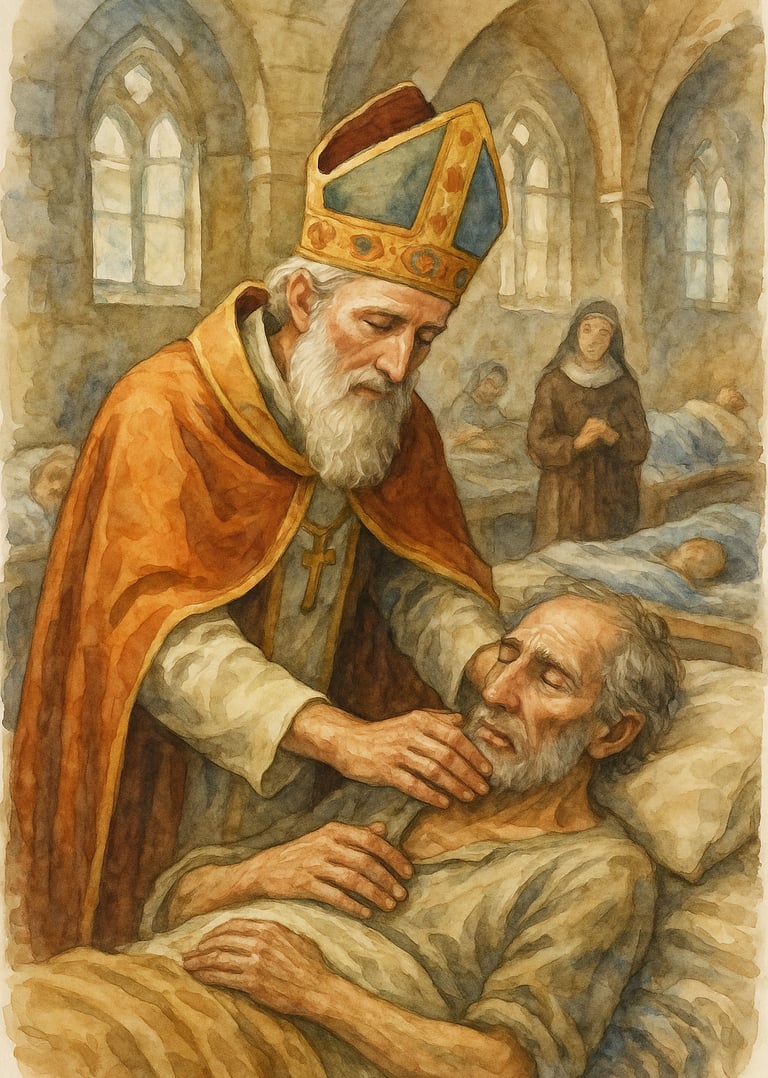St. Landry of Paris
Bishop of Mercy & Founder of Hôtel-Dieu
Halo & Light Studios
6/10/20252 min read


Click here for a reel of Daily Dose of Saints and Faithful Art:
https://youtube.com/shorts/U1pFaLJ3Nq8?si=zYRORyfk6988XlEX
In an age often marked by war, famine, and spiritual confusion, St. Landry of Paris stood as a radiant example of what it means to be a true Catholic shepherd. Serving as bishop in the 7th century, Landry embraced the fullness of the Gospel not only through preaching the Word but by living out the corporal and spiritual works of mercy—a balanced expression of the Church’s perennial mission to serve both body and soul.
When a terrible famine struck Paris, Landry responded without hesitation. He emptied his personal treasury and even sold sacred vessels from the Church—not out of irreverence, but in deep reverence for the living image of Christ in the poor. In doing so, he practiced the corporal works of mercy: feeding the hungry, giving drink to the thirsty, and caring for the sick. But his charity was not limited to material relief. Landry also embodied the spiritual works of mercy—consoling the sorrowful, instructing the ignorant, and offering hope to the despairing.
Understanding that true healing must encompass the whole person, Landry went on to found the Hôtel-Dieu, one of Paris’s first hospitals and is still in service today. It is more than a building—it is a public testimony that the Church is called to be a hospital for sinners, a refuge for the wounded, and a light in times of darkness.
Pope Francis echoed this in a 2013 interview with La Civiltà Cattolica saying, “The thing the Church needs most today is the ability to heal wounds and to warm the hearts of the faithful; it needs nearness, proximity. I see the Church as a field hospital after battle. It is useless to ask a seriously injured person if he has high cholesterol or about the level of his blood sugars! You have to heal his wounds. Then we can talk about everything else. Heal the wounds, heal the wounds… And you have to start from the ground up.”
Many today challenge the Church’s relevance, accusing it of being distant or detached. But the life of St. Landry offers a robust apologetic: the Church has always been at the forefront of mercy—in hospitals, soup kitchens, leprosaria, schools, and confessionals. Her mission is Christ’s own: to serve, to heal, and to save.
The Catechism of the Catholic Church teaches that “the works of mercy are charitable actions by which we come to the aid of our neighbor in his spiritual and bodily necessities” (CCC 2447). These works are not optional—they are evidence of a faith that is alive. And St. Landry lived them intentionally.
His legacy reminds us that holiness is not abstract. It looks like carrying bread to the hungry and words of comfort to the suffering. It looks like caring for wounds and helping souls rise. It is, quite simply, Catholicism in action.
So we must ask ourselves: Is Christ’s mercy visible in our lives? Do we take the time to turn an idea into an act of mercy? Because where there is mercy, there is the Church—and where the Church is, there Christ is.
